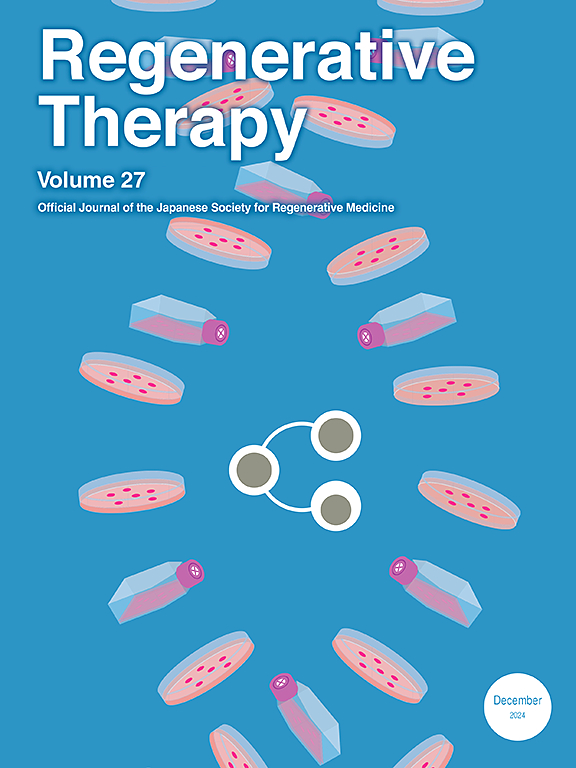3D dynamic culture of muse cells on a porous gelatin microsphere after magnetic sorting: Achieving high purity proliferation
IF 3.4
3区 环境科学与生态学
Q3 CELL & TISSUE ENGINEERING
引用次数: 0
Abstract
Muse cell has become a promising source of cells for disease treatment due to its remarkable characteristics, including stress tolerance, low tumorigenicity, effective homing ability, and differentiation into histocompatibility cells after transplantation. However, there are some obvious obstacles that need to be overcome in the efficient expansion of Muse cells. We extracted mesenchymal stem cells (MSCs) from human umbilical cord and their MSCs phenotypes were verified by flow cytometry. Then, immune magnetic sorting was performed to obtain Muse cells, and the expression of pluripotency related factors and the ability to differentiate into three germ layers were verified with sorted Muse cells. We then tested a new 3D culture method with dynamic microsphere carrier to possibly expand Muse cells more efficiently. Finally, in vivo experiments were conducted to check the homing ability of Muse cells to muscle injury. Our results showed that, the cultivation and expansion of Muse cells can be more effectively achieved through dynamic microsphere carrier; compared to non-Muse cells, Muse cells have stronger pluripotency and differentiation ability, and their homing ability in the muscle injury mice model is superior to that of non-Muse cells. Therefore, with the method of immune magnetic sorting and dynamic microsphere carrier, highly regenerative Muse cells can be more effectively sorted and expanded from MSCs.
求助全文
约1分钟内获得全文
求助全文
来源期刊

Regenerative Therapy
Engineering-Biomedical Engineering
CiteScore
6.00
自引率
2.30%
发文量
106
审稿时长
49 days
期刊介绍:
Regenerative Therapy is the official peer-reviewed online journal of the Japanese Society for Regenerative Medicine.
Regenerative Therapy is a multidisciplinary journal that publishes original articles and reviews of basic research, clinical translation, industrial development, and regulatory issues focusing on stem cell biology, tissue engineering, and regenerative medicine.
文献相关原料
公司名称
产品信息
索莱宝
Calcein-AM/PI kit
 求助内容:
求助内容: 应助结果提醒方式:
应助结果提醒方式:


